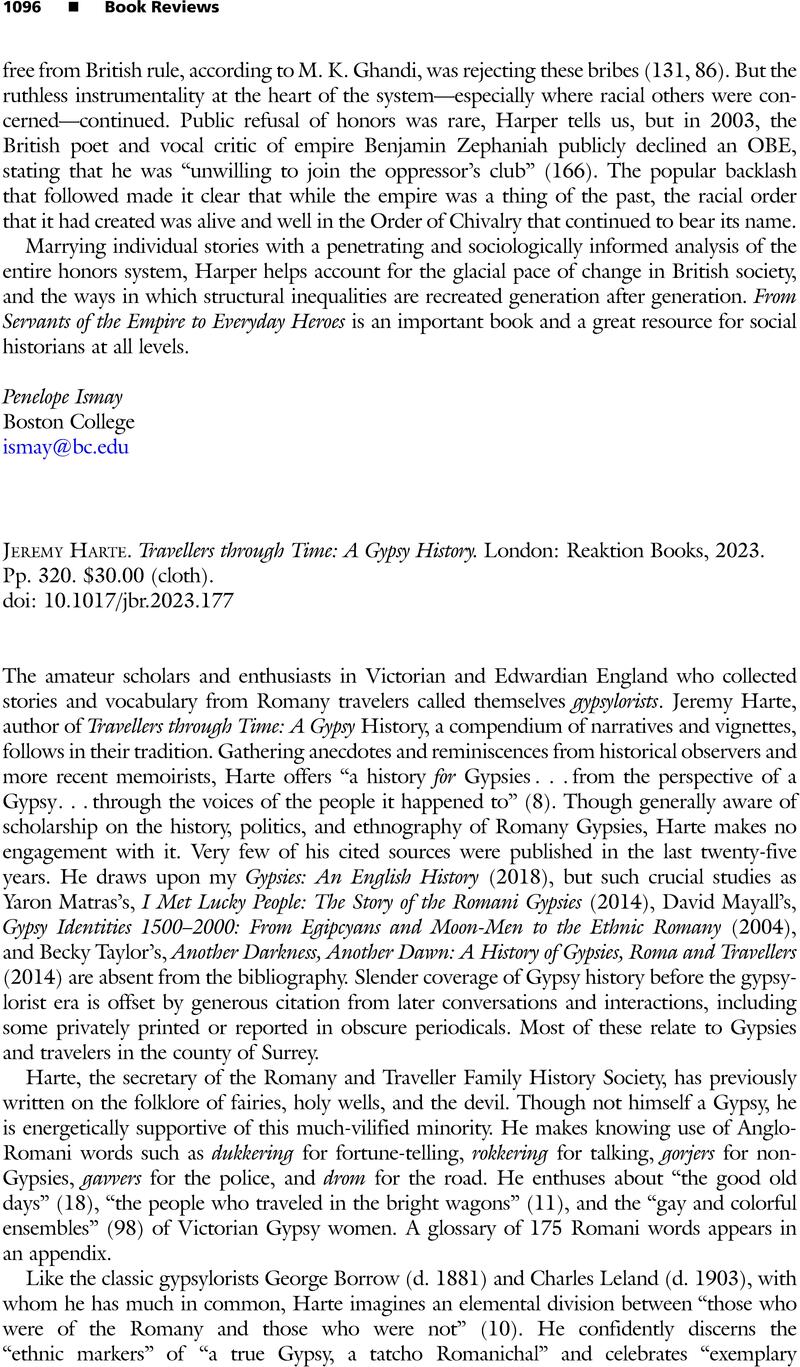No CrossRef data available.
Article contents
Jeremy Harte. Travellers through Time: A Gypsy History. London: Reaktion Books, 2023. Pp. 320. $30.00 (cloth).
Review products
Jeremy Harte. Travellers through Time: A Gypsy History. London: Reaktion Books, 2023. Pp. 320. $30.00 (cloth).
Published online by Cambridge University Press: 19 February 2024
Abstract
An abstract is not available for this content so a preview has been provided. Please use the Get access link above for information on how to access this content.

- Type
- Book Review
- Information
- Copyright
- Copyright © The Author(s), 2024. Published by Cambridge University Press on behalf of The North American Conference on British Studies



